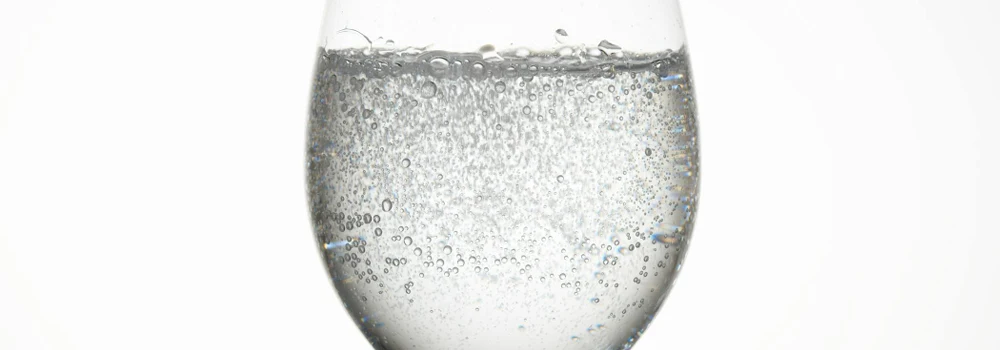Texture & Bubbles: The Sensory Side of Seltzers
- October 9, 2025
- Posted by: Dex Thompson
- Category: Blogging

From the first crisp hiss of the can to the final fizzy sip, seltzer is as much a tactile experience as it is a beverage. The effervescence, mouthfeel, and mineral nuances of sparkling water play a bigger role in consumer preference than most realize. In a market now packed with flavored seltzers, functional waters, and THC infused seltzers, texture and bubbles have quietly become the deciding factors for repeat purchases.
Why Texture Matters in Seltzer
Consumers often describe their favorite seltzers with phrases like “more bite,” “tighter bubbles,” or “clean finish.” These descriptors aren’t just marketing fluff. They speak directly to a category of sensory evaluation called mouthfeel, the combination of texture, carbonation intensity, and how the liquid behaves on the palate.
Carbonation isn’t a binary. Seltzers can range from sharp and aggressive to soft and velvety. The size, quantity, and persistence of bubbles can affect whether a drink feels refreshing or flat, premium or generic. A low carbonation level might mute a fruit flavor. A high carbonation profile might overwhelm it.
In short: bubble structure shapes perception.
The Science Behind the Sparkle
At its core, carbonation is carbon dioxide gas dissolved under pressure. When the pressure is released, by opening the can, CO₂ escapes in the form of bubbles. But it’s not just about volume. The type of water, mineral content, temperature at bottling, and even can lining all contribute to the final texture.
Here’s what differentiates the sensory profile of one seltzer from another:
- Bubble size: Smaller bubbles feel more refined and linger longer, creating a champagne-like experience.
- Burst rate: Some bubbles pop immediately; others roll gently across the tongue.
- Retention: A good seltzer keeps its fizz from the first sip to the last, not just when it’s ice-cold.
Texture is also influenced by the acidity and sweeteners used. For example, natural fruit essences tend to interact better with crisp carbonation than heavier artificial flavorings. In THC infused seltzers, emulsifiers used to stabilize cannabinoids can subtly change the drink’s viscosity, adding creaminess or dampening bubble intensity.
Sensory Differentiation in a Crowded Market
With dozens of brands on the shelf, flavor alone doesn’t create loyalty. Texture does.
Premium seltzers like Topo Chico or Sanzo have gained cult followings not solely for flavor, but for their hard-hitting carbonation and mineral complexity. At the opposite end, mainstream brands often soften their carbonation to appeal to a broader audience, sacrificing boldness for approachability.
This sensory strategy matters, especially as the seltzer category fragments further:
- Hard seltzers prioritize drinkability over punchy carbonation.
- Functional seltzers (with adaptogens, caffeine, or CBD) often tone down bubbles to match a wellness-forward image.
- THC infused seltzers are navigating a new middle ground, balancing soft effervescence with cannabis emulsion science to deliver a consistent experience.
Texture is where brand identity is built, even if the consumer can’t always articulate why they like one better than another.
Designing for Feel, Not Just Flavor
R&D teams in the beverage world have long focused on taste, sugar levels, and pH. But as the category matures, the tactile side of product development is rising in importance.
Advanced carbonation testing now measures not just total CO₂, but bubble dynamics. Some brands are experimenting with nitrogen infusions to create a denser, smoother sensation (think Guinness-style cascading bubbles in a water format). Others are exploring “active sipping” bubbles, formulations that create movement in the mouth, not just taste.
As formulations grow more complex, especially with THC infused seltzers, maintaining clean carbonation profiles becomes a technical challenge. Emulsion layers must not dull the sparkle. Added nutrients or botanicals can alter viscosity, slowing bubble rise or dampening pop.
It’s a new kind of beverage engineering, one driven by sensory intelligence.
FAQs: Texture and Carbonation in Seltzers
Why do some seltzers feel more “bubbly” than others?
Because carbonation level, bubble size, and mineral content all influence the sensation. Premium brands often use higher CO₂ pressure or mineral-rich water, which enhances texture.
Do bubbles affect how flavors are perceived?
Yes. Bubbles can carry aroma compounds to the nose and intensify certain flavor notes. A seltzer with strong carbonation may feel more refreshing or “clean” even if the flavor is identical.
Why do some THC infused seltzers feel flatter than regular ones?
THC emulsions can interfere with carbonation retention. Stabilizers and emulsifiers used in cannabis drinks may soften the bubble profile or change the mouthfeel.
How can I tell if a seltzer has “good” texture?
Good texture is subjective, but key indicators include fine, persistent bubbles; consistent fizz from start to finish; and no “film” or heaviness left behind on the tongue.
Is it possible to have too much carbonation?
Yes. Overcarbonation can mask flavor, create excessive bite, or cause bloating. The goal is balance: enough effervescence to lift and complement the flavor.

